What’s holding your transportation business back from expanding your fleet, upgrading your technology, or staying ahead of the competition? For many companies, the answer lies in cash flow—or rather, the lack of it. Late payments and unpaid invoices don’t just create headaches; they can stall your growth and limit your potential.
Proactive debt recovery offers a solution. By implementing strategies that prioritize timely collections, transportation companies can reclaim control over their cash flow. This isn’t just about closing gaps in receivables—it’s about creating opportunities for sustainable growth and market leadership.
In this blog, we’ll dive into how effective debt recovery strategies fuel critical growth opportunities, from fleet expansion to technological advancements, and why taking a proactive approach is essential to thriving in today’s competitive landscape.
The Role of Cash Flow in Transportation Success
Why Cash Flow Matters
In the transportation industry, cash flow fuels both daily operations and strategic growth. It ensures essential costs like fuel, vehicle maintenance, and payroll are covered while also enabling companies to:
- Expand fleets to handle larger contracts.
- Invest in advanced logistics technologies to improve efficiency.
- Respond quickly to new market opportunities.
The Cash Flow Challenge
Late payments, billing disputes, and varied contract terms often create cash flow disruptions, tying up capital that could be used to grow the business. These financial bottlenecks hinder operations and make it difficult to remain competitive in an industry with tight margins.
What is Proactive Debt Recovery?
Defining Proactive Debt Recovery
Proactive debt recovery is a forward-thinking approach that focuses on minimizing outstanding debts before they become a problem. By combining early intervention, technology, and streamlined processes, this strategy keeps cash flow stable and business operations running smoothly.
Key Components of Proactive Strategies
- Setting Clear Payment Terms: Define payment schedules and penalties upfront to prevent confusion and disputes.
- Leveraging Automation: Automate follow-ups and reminders to ensure timely payments.
- Prioritizing High-Risk Accounts: Use predictive analytics to focus on accounts most likely to default.
Benefits of Proactive Debt Recovery for Transportation Companies
Improved Cash Flow
Faster collections free up working capital, reducing the risk of bad debt and enabling companies to:
- Cover operational costs like payroll and maintenance.
- Address unexpected expenses with ease.
Fueling Growth Opportunities
- Fleet Expansion: Steady cash flow allows companies to purchase additional trucks, increasing capacity and revenue potential.
- Technology Upgrades: Savings from reduced write-offs can fund GPS tracking and fleet management tools, boosting efficiency.
- Market Competitiveness: Consistent cash flow enables competitive pricing and expansion into new regions.
Operational Efficiency
Automating routine tasks like invoicing and follow-ups, companies reduce administrative burdens, lower costs, and allow teams to focus on high-value activities.
Stronger Client Relationships
Clear communication and proactive dispute resolution build trust, ensuring long-term client loyalty and repeat business.
5 Steps to Implement Proactive Debt Recovery Strategies
- Set Clear Payment Terms: Ensure contracts outline payment schedules, late payment penalties, and dispute resolution processes.
- Leverage Technology: Automate workflows like invoicing and reminders, and use analytics to monitor payment patterns.
- Train Your Team: Equip your collections team with negotiation skills and knowledge of industry challenges.
- Engage Recovery Experts: Partner with specialists to handle complex cases and improve recovery rates.
- Measure and Optimize: Track metrics like Days Sales Outstanding (DSO) and recovery rates to refine strategies over time.
Real-World Scenarios: Proactive Debt Recovery in Action
Fleet Expansion
A transportation company reduces DSO by 20% using automated invoicing and follow-ups. The improved cash flow allows them to purchase 10 additional trucks within six months, expanding capacity and revenue.
Investing in Technology
Proactive collections free up funds for a logistics firm to invest in AI-powered route optimization. This reduces fuel costs by 15% and improves delivery efficiency.
Gaining a Competitive Edge
By resolving disputes quickly, a trucking company maintains healthy cash reserves, enabling them to offer flexible payment terms and win contracts in competitive markets.
Overcoming Common Challenges in Proactive Debt Recovery
Client Resistance
Clients may resist stricter payment terms or frequent follow-ups. To address this:
- Clearly communicate payment policies and their benefits.
- Offer incentives like discounts for early payments.
- Ensure follow-ups are polite and professional.
Technology Adoption
Selecting and implementing the right tools can be overwhelming. To succeed:
- Identify pain points and prioritize tools that address them.
- Choose scalable, user-friendly solutions.
- Introduce new tools gradually to minimize disruption.
Resource Constraints
For small-to-medium businesses with limited budgets:
- Use existing software with built-in automation features.
- Focus on high-risk accounts to maximize impact.
- Outsource complex cases to recovery specialists for cost-effective results.
Driving Growth Through Proactive Debt Recovery
Proactive debt recovery is more than a strategy—it’s a catalyst for sustainable growth in the transportation industry. By optimizing collections processes, addressing payment delays, and leveraging technology, transportation companies can:
- Stabilize cash flow.
- Invest in growth opportunities like fleet expansion and technology upgrades.
- Build stronger client relationships.
- Gain a competitive edge in a challenging market.

